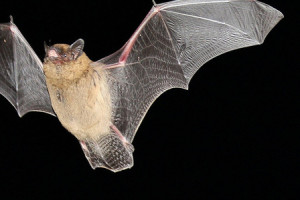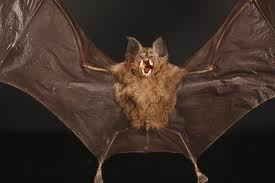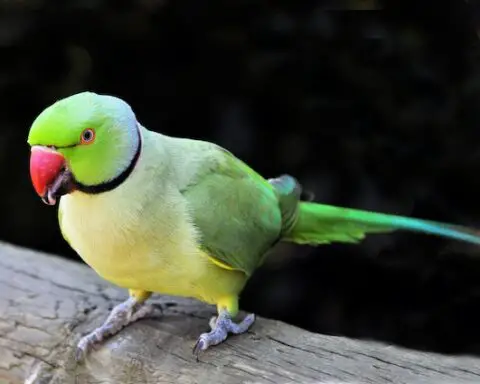Not many people are aware of what do bats eat for the reason that these mammals are not easily accessible. Bats are the only mammals that can fly. There are more than 1,200 bats species across the globe that are subdivided into two categories namely fruit-eating bats and echolocating bats. More than 70% of bats are carnivorous; while the rest of the species are fish-eating, frugivores, and blood-sucking mammals. They are one of the best flower pollinators in fact most plants rely on bats for pollination. The smallest of the bats is Southern Blossom Bats, belong to New Guinea and measures 29 – 33 mm (1.14 – 1.34 in) by length, with a wingspan of only 2 -2.6 grams (0.07 – 0.09 oz). Whereas, the largest of all bats, Kalong reside in East Indies measuring length of 41 cm (16 inches), with a wingspan of 1.7m (65 inches).
What Do Bats Eat?
Do you know what do bats eat? Bats predominantly feed on fruits, insects, vertebrates, flower nectar, and blood. Amongst which insects nearly covers most of their diet in that 3/4th of the total bats make their living through eating insects. These insects embrace both flying as well as ground-living. Conservationists believe that every night bats intake insects that are one-third of their own body weight. They are known to consume hundreds of different insects within few hours. Thanks to the nature that has kept the population of insects in a sheer equilibrium; otherwise if bats begin to exterminate, these insects would grow to an unmanageable proportions.
Because of their nocturnal nature bats usually spend most of their daytime on roosting, sleeping, grooming and other kinds of zero-activities. Baby bats rely on their mother’s milk at the preliminary stages of their life; however, after couple of weeks these juveniles tend to go out and begin their quest for food by themselves. In a nutshell they’re on their own now!
Now you got an idea of what do bats eat? When the night fall, these nocturnal creatures start implementing their hunting techniques which was not known until the late 18th century but when Lazarro Spallanzani performed a series of experiments on a group of bats; real facts came to the fore. He deduced that bats do not use their sight to locate their prey; there is something else that assists them to identify the kill which was extraordinary hearing senses. Echolocation technique was identified in 1930 by Donald Griffin which implied that bats produce certain high-pitched sounds constantly that cannot be heard by anyone except bats. These sound waves hit the prey and returns back to these blind mammals with the help of which bats can hunt those preys with precision. Biologists tested 6 major bat families and they concluded that these animals have lost the capacity of making Vitamin C. How many of you know what do bats eat? Not many for sure! probably due to the fact that these mammals cannot be kept under captivity.
Can You See Bats Catching Insects?
Well, to be precise you won’t be able to see bats catching insects with a naked eye. For this, you need to use camera that captures thousands frame per seconds. Back in 1960, Frederick Webster used a fast camera and he made a remarkable discovery in that he noticed that bats rarely catch flying insects during their flight, as a matter of fact these mammals make use of their tail membranes to raise an insect and then take it back to their habitat. Now is the time when bats begin to eat insects. You can now well imagine what do bats eat.

Do Bats Use Echolocation to Detect Insects?
Some conservationists hold that bats do not use echolocation to identify the exact position of a prey; as a matter of fact they hear sounds those insects produce and then start following those sound waves.
Bats Drinking Fruit Juice
Scientists discovered two bats’ families that predominantly feed on fruits or seeds. These are Megachiropterans and microchiropterans. Bats falling under these categories normally feed on sweet fruit juices supplemented by some seeds. For doing this, these flying mammals snatch fruits from trees and return back to their roosting place for sucking juice. The seeds are thrown away onto the ground which indeed gives rise to other plants.
Bats Drinking Flower Nectar
There are few bats that fancy their diet through drinking flower nectar and are not really akin to feed on live insects or animals. These types of bats possess long muzzles and long tongues with help of which they can easily feed on flower nectar. What do bats eat, is a relatively difficult question to ask especially if there are more than one thousand bats species.
Carnivorous Bats
Apart from above mentioned bats, there is a small group of bats that rely on vertebrates for their primary feed. These mammals largely consume frogs, lizards, and small birds.
Fish-Eating Bats
Numerous bats’ species primarily feed on fish and these animals are widespread in all the continents. Like other species, they also use echolocation to identify any ripple movement on the water surface and with the help of their big strong claws they don’t drop it.
Blood-Drinking Bats
Quite a few numbers of bats consume blood as a regular part of their diet. They drink blood of horses, cattles and rarely humans. These bats belong to the family of hematophagy and are named as white-winged vampire bats and hairy-legged vampire bats. The difference between the two is that the white-winged bats drink mostly blood of mammals while the latter consumes the blood of birds. Quite a few people know for sure what do bats eat.

How Do Bats Fly?
Bats are characterized as unique mammals not only for their flying ability but also for their personal traits. Other mammals such as flying squirrels can only glide but could not fly properly like other birds. Bats can actually give you a full insight about the flight. The structure of the bones and wing membranes are designed in such a way that ensures a quick navigating ability during the flight. This is a very important characteristic that makes easier for these mammals to reach out those flying bugs that move in a zigzag manner. Even the most agile bugs lie within their reach because of their flexible wings. These mammals have light-weight, long and straight bones that support the maneuverability of membranes. The wings of the bats are thin as well as flexible that stretches between the fingers, legs, body and tail. (1)
Bats Disease Killing Millions of Bats
An epidemic disease that has recently killed millions of bats all throughout North America by the name of White-nose Syndrome. Acadia National Park has approved the white-nose syndrome which arose when bats had white fungus on their muzzles. Soon after the disease infects, the bats turn out to be dehydrated and die shortly. White-nose syndrome is not hazardous for humans; however, people are still advised not to approach bats when these mammals are roosting, until and unless you’re fully protected with precautionary equipment. (2)
Precautionary Measures
- Never take on bats whether they are dead or alive. Call for an expert or concerned personnel if you find any unusual bats activity.
- Hibernation months range from November to April in which bats lose considerable amount of energy causing mortality in them; therefore, biologists forbade people to enter into caves. (2)
Now you know what do bats eat? Did you know it before?
More Facts About Bats
What Do Bats Eat? Videos
References
- “Exploring Life Science – Bats Cave Life”, by Marshall Cavendish
- “Bat Conservation International Organization”, batcon.org








